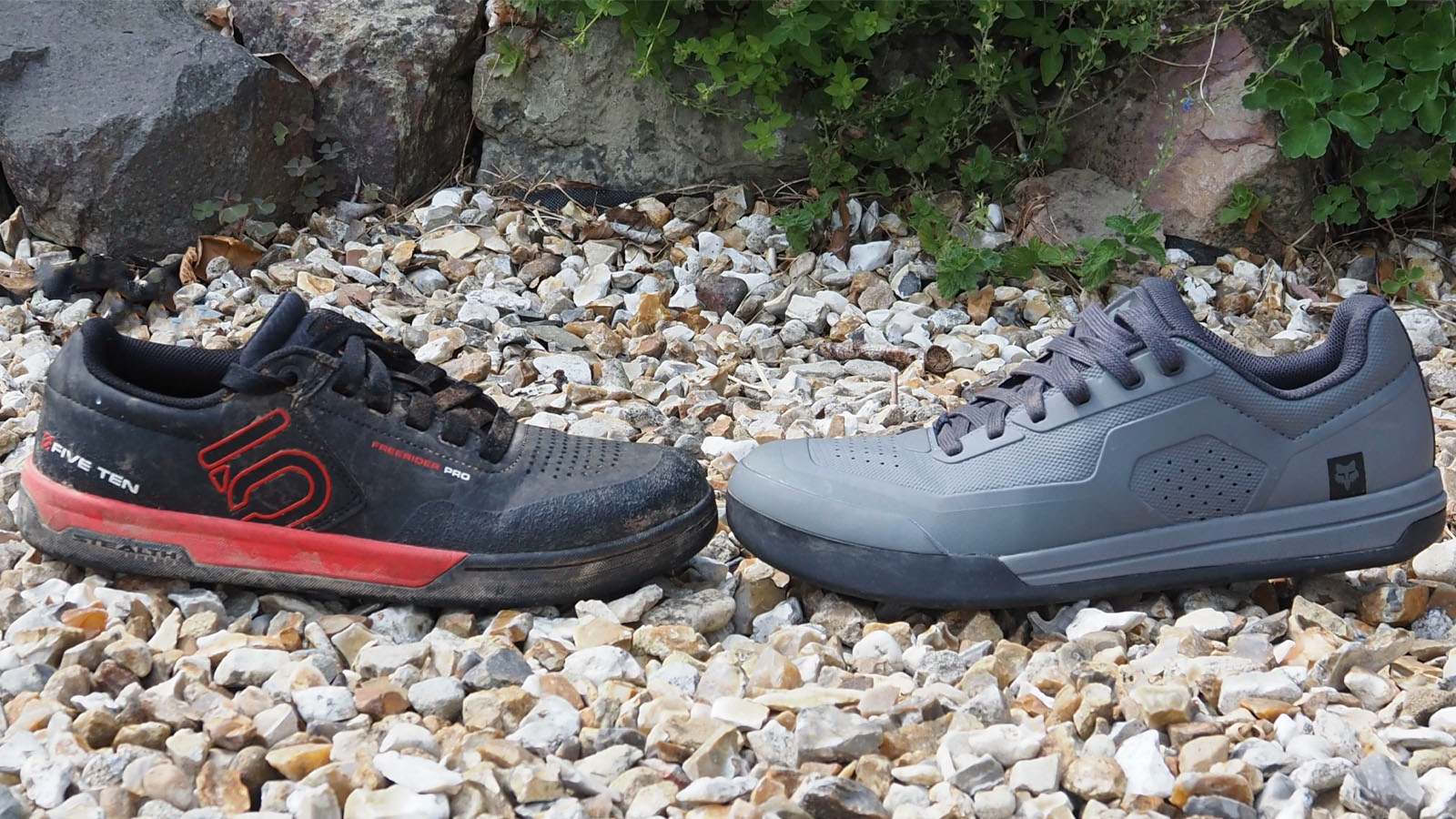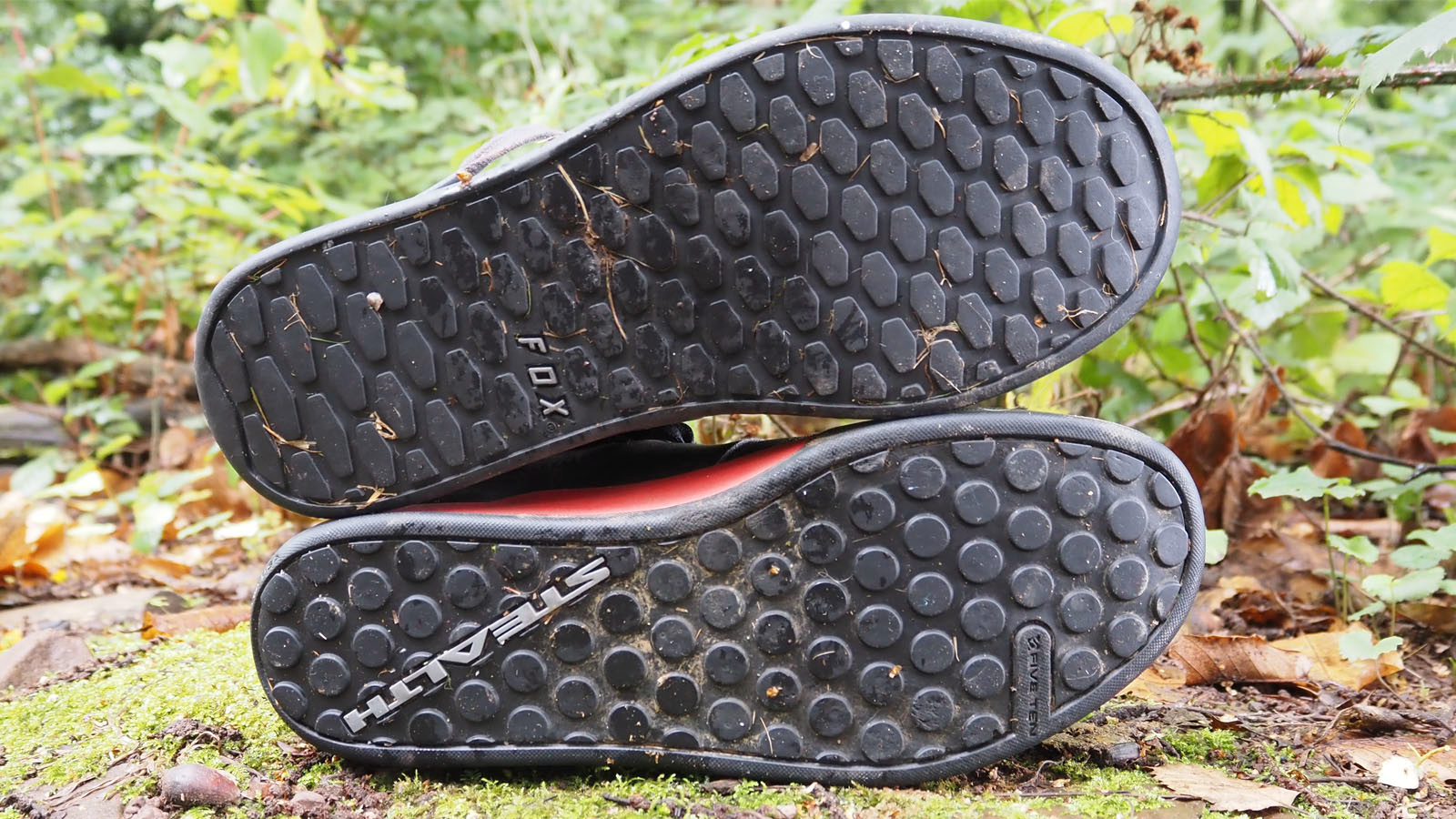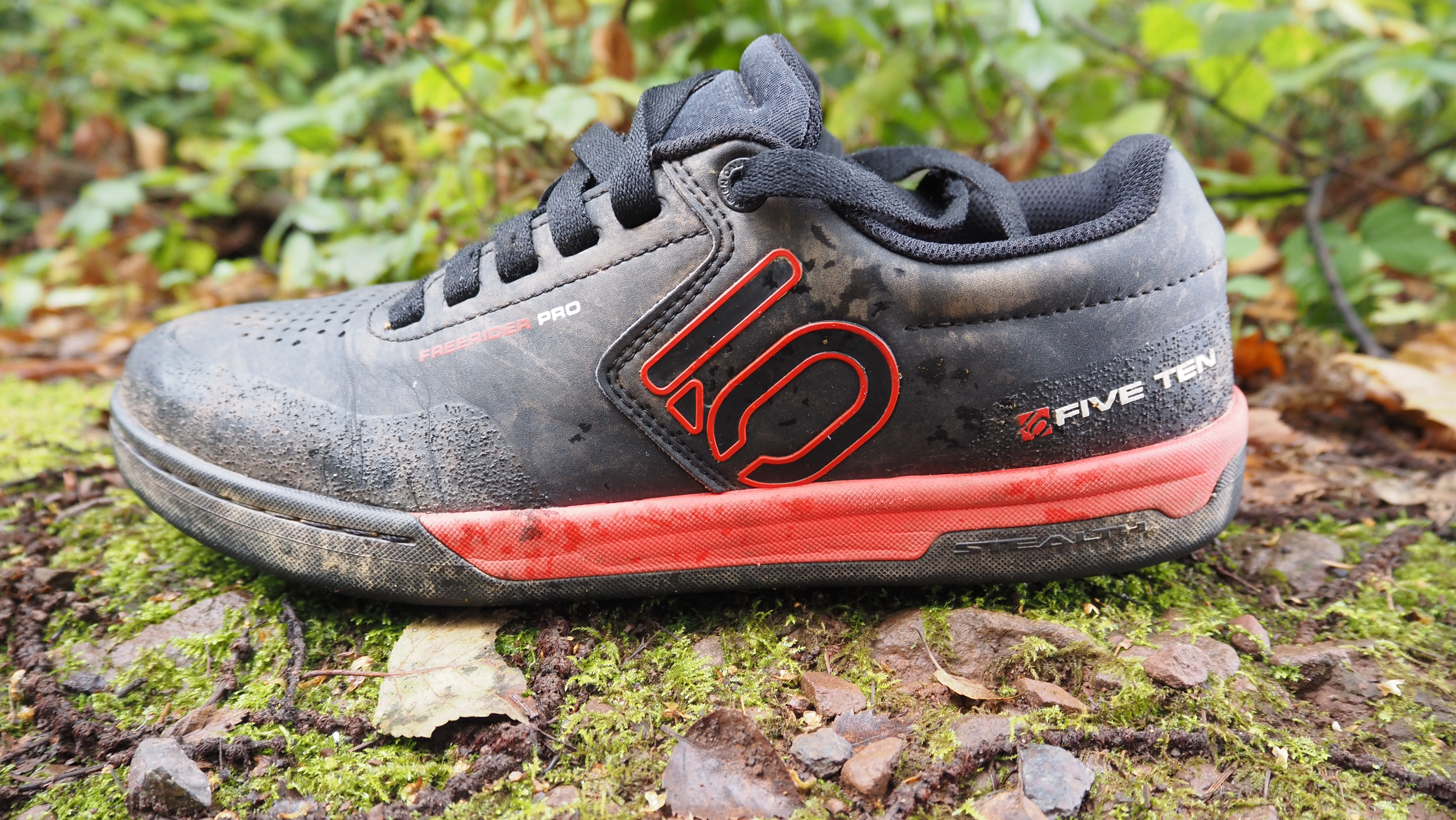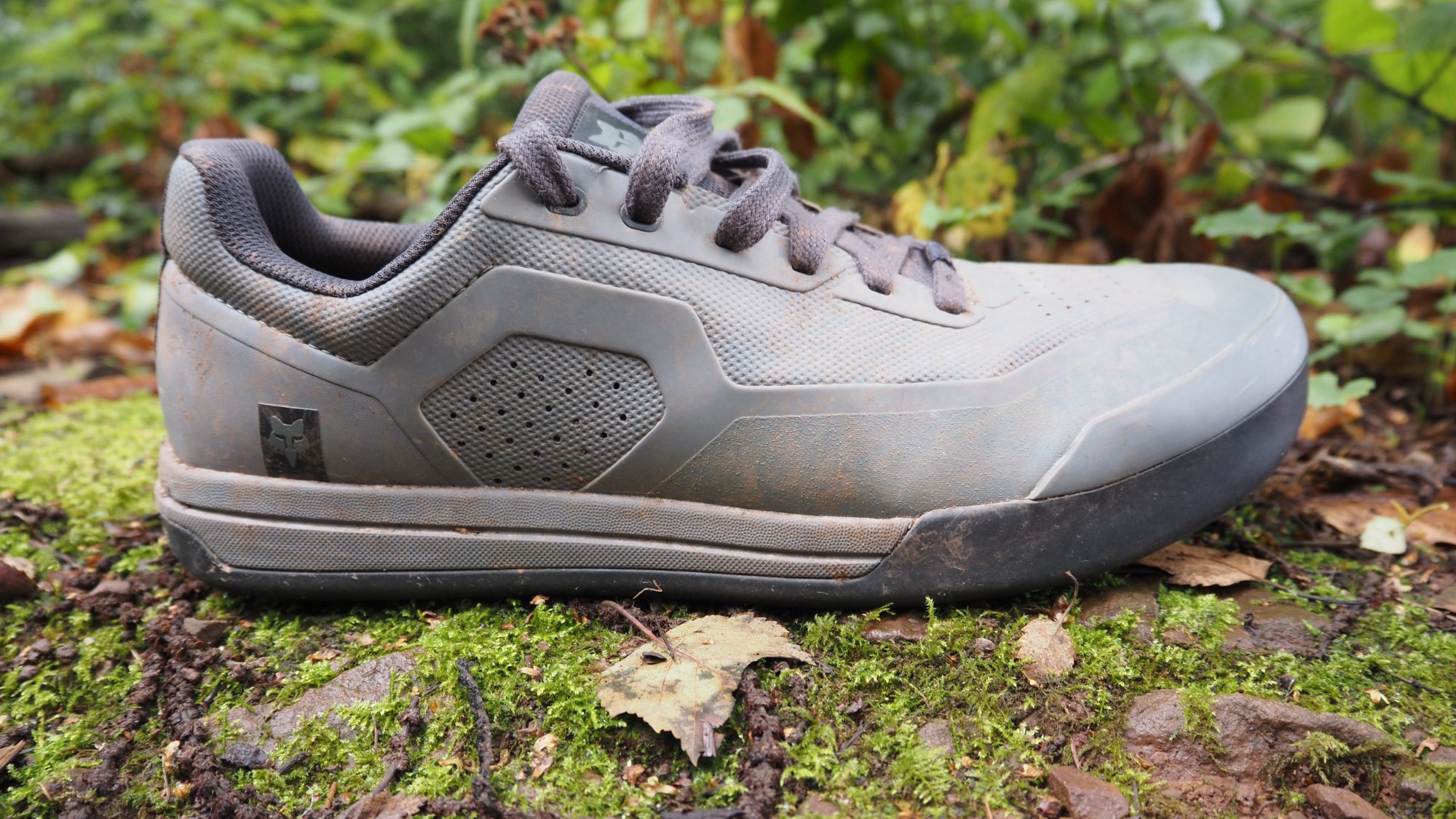Five Ten Freerider Pro vs Fox Union Flat – two excellent flat pedal MTB shoes, but which is best?
We've pitched the market leading performance MTB flat pedal shoe against a newer model from one of the biggest names in bike gear

Five Ten Freerider Pros have been regarded by many as the best flat pedal MTB shoe for many years now. Earlier this year, Fox Racing released the Fox Union Flat shoe which has given the Freeriders some serious competition, but which shoe is best? I've been spending a chunk of time on both of them to give you the answer.
Before we get started, a couple of there's a couple of points to bear in mind – all my findings are based on wearing size 44 EU (US 10.5, UK 9.5) shoes, and I've had many years of riding in various Freerider Pro shoes, compared to a few months on a single pair of Union Flats.
Also, pricing for the shoes is very similar with the Fox Union Flats having an RRP of $149.95 / £129.99 / €149.99, while the Five Ten Freerider Pros come in at $150.00 / £130.00 / €140.00

Pedal grip and feel
The level of grip you get from a flat shoe on the pedal is an essential part of whether the shoe performs of not, as clearly you don't want your feet to be sliding off the pedals midway through a section. The good news is that both shoes offer some of the best grip around. Five Ten's Stealth rubber sole is excellent, as is Fox's Ultrac shod sole too. In theory, the slightly deeper but more widely spaced lugs of the Freeriders offer a little more positional adjustment on the pedal than the Union's hexagonal lugs, but out on the trail, I couldn't really tell any difference.
While there's little to discern between them in terms of vice-like grip, the shoes feel significantly different on the pedal. I rode in odd pairs of them and switched the shoes around to see how each compared. The Five Tens definitely give more feel and feedback, as well as forming around the pedal ever so slightly compared to the Unions, while the stiffer soled Fox shoes give more support and better power transfer along with it.
Grip and feel winner
Its a tie – depending on what level of feel versus support you prefer

Fit and comfort
I've got slightly narrow feet and almost always take a size 44 shoe, I've found both the shoes on test here to be true to size and a good fit for me. The Unions have a slightly wider sole and mid sole, with a deeper upper than the Freerider Pros which are a touch more minimalist in comparison. Both shoes offer similar levels of foot comfort, though the padding on the tongue of the Freeriders is thicker.
Both shoes have a comfortable insole with arch support too, though the insole is a touch thicker on the Union Flats. Splash resistance and ventilation is once again similar on both models. That said, the Fox shoes have more ventilation holes (not that they felt any cooler) and the lower cut ankle area of the Freeriders makes them a tad more susceptible to puddle splashes and debris finding its way inside.
Fit and comfort winner
It's close, but the Fox Union Flats edge it here
Protection
While both shoes feature sturdy toe boxes and reinforced heels, the coverage on the Unions is a deeper at the heel and wraps further over the toes for enhanced protection. The deeper uppers on the Fox shoes give a tad more ankle support too.
Protection winner
Fox Union Flats

Durability
This is the hardest comparison to make as I've yet to put in as much riding time in with the Unions as I have with the Freeriders. However, the shoes from Fox are still looking good after months of riding and the plastic uppers clean up very well after filthy sessions. The soles are showing the signs of pedal wear, but that's to be expected on flats with long pins.
The Freerider Pros have had more riding time in them, including a full winter, but are looking pretty good all the same. The soles have cut up in places from pedal pins and there's a few creases in the uppers behind the toe area, but no holes or cracks yet.
Durability winner
A tie – both shoes are looking good for their respective ages
Weight
The slightly lower cut shape of the Freerider Pros gives them an advantage in the weight category, so in my size 44 EU version of both shoes, the Five Ten shoes weigh in at 748g per pair, compared to the Union Flats at 838g. Admittedly, 45g per shoe isn't significant and I've not been able to detect any discernible difference weight-wise while riding, but if you're counting the grams, then you might feel differently. Both shoes are lighter than Specialized 2FO DH Flat (872g) and Ride Concepts Tallac (854g) though.
Weight winner
Freerider Pros
Anything else
My only real gripe with the Union Flats is that the laces are the standard sneaker/trainer flat type and are already fraying, so will inevitably snap over time. The laces are also a little on the short side, even with my narrow feet. The Freerider Pro's laces do snag on thorns etc, but are definitely hardier and longer too.
An important aspect of any product these days is sustainability. Both shoes have constructed using manmade rubber and plastic, so are unlikely to be recyclable anywhere. Probably due to the brand's climbing shoe heritage, there are plenty of repairers out there who offer a resoling service for Five Ten shoes using genuine Dotty rubber. Being newer and only released this year, I've not been able to find anything similar for the Fox shoes though.
Adidas (Five Ten's parent company) website states that the brand is committed to being climate neutral across its own operations by 2025 and its entire supply chain by 2050. Adidas are also working towards using more "environmentally preferred materials" and have stated that 20 percent of the materials in its footwear will comply by 2025. The brand also says it has a supply chain code of conduct and human rights for workers manufacturing its products.
Fox have a corporate code of conduct which includes environmental protections and disposing of waste materials in a "responsible manner". Its website also lists protections for workers in its supply chain. Aside from that, I've not been able to find anything on carbon neutrality aims or moving towards more sustainable manufacturing practices.

Overall
The good news is that both shoes are excellent performers and are two of the best flat pedal MTB shoes you can buy, so you really can't go wrong – whichever model you decide is right for you.
The Five Ten Freeride Pros are lighter and give better feel and feedback, while the Fox Union Flats give slightly more protection and improved pedal efficiency.
While it sounds like I'm horribly perched on the fence when I say both shoes offer slight advantages over each other and it's very hard to choose an overall winner, it's true. To be honest, the deciding factor for me would be whichever model was on the best deal price at the time.
Overall winner
Yes, it's a tie

Rich Owen joined the BikePerfect team as editor in 2021. He's worked as a journalist and editor for over 24 years, with 12 years specializing in cycling media. Rich bought his first mountain bike (a rigid Scott Tampico) in 1995 and has been riding MTB for almost 30 years.
Current rides: Merida One-Forty 6000, Banshee Paradox, YT Jeffsy Core 3, Saracen Ariel 30 Pro
Height: 175cm
Weight: 69kg
